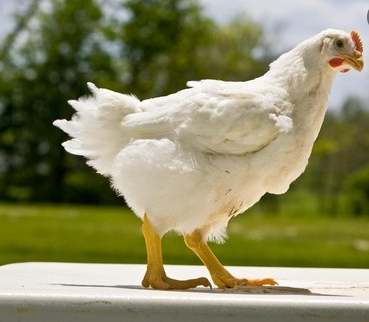
The better growth spider solitario playonline and production in poultry require a ration balanced with macronutrients and micronutrients. There are many nutrients required for the growth and development of chickens in which minerals and vitamins are of apex value. The deficiency of minerals and vitamins in feed and their unavailability in the body results into various diseases. Deficiency or unavailability of the active form of vitamin D (1-25-dihydroxycholecalciferol) causes diseases like rickets, stunted growth, osteomalacia, tibial dyschondroplasia (TD), slipped tendon in broilers and growers, and lameness, poor quality egg, broken egg, double yolk, meat spot egg production problem in the layer.
Metabolites of vitamin D (Alpha calcidiol) are readily converted into active form of vitamin D (1-25dihydroxycholecalciferol) and the active form of vitamin D is acts like a hormone. The absorption of calcium and phosphorus in the intestine, reabsorption in the kidney and mineralization and demineralization of the bones (calcium and phosphorus deposition and mobilization in bones) in coordination with parathyroid hormone (PTH) are some of the major functions of the vitamin D hormone (Atencio et al., 2009). For proper functioning of the muscle and nervous system coordination maintaining calcium homeostasis in the body is the most essential function of vitamin D hormone(De Luca, 2008). In uterus of laying hens this hormone stimulates the production of calcium-binding protein (CaBP) which is indispensable in calcium absorption for shell formation (Corradino et al., 1968).
Vitamin D steroid hormones helps in repairing and maintenance of skin health and intestinal microbiota bio balance as well. The level of vitamin D bioavailability is linked to its impact on the gastrointestinal microbiota in gastrointestinal bacterial genera (Luthold et al, 2017, Garg et al, 2018). Vitamin D hormone plays important role in the barrier function and homeostasis of intestinal microbiota, and also alleviate the disease progression through anti-inflammatory immune responses. Vitamin D alters the population of intestinal commensals such as Faecalibacterium, Clostridium, and Ruminococcaceae who are the principal producers of short-chain fatty acids and Akkermansia and Bifidobacterium also produce lactate and butyrate (Venegas et al, 2019). Acetate and lactate produced by Bifidobacterium and Bacteroidetes can be consumed by butyrate-producing microbes such as Faecalibacterium and Roseburia (Ríos-Covián et al, 2016) used as stimulant of intestinal villus growth (Kien et al, 2007). Butyrate is one of the preferred energy sources over glucose and glutamine by epithelial cells and may account for 70% of the total energy consumption of the enterocytes (Schepach et al, 1994). Hence, butyrate helps rapid cell proliferation in the small and large intestine to maintain intestinal barrier and cell integrity (Guilloteau et al, 2010; Peng et al, 2009). Further the vitamin D hormone also play very important role in in gene transcription process associated with vitamin D receptors (VDR) in the nucleus.
Birds may receive vitamin D from vitamin D premixes, endogenous production (ultraviolet radiation) and animal by-products (Atencio et al., 2009). But, to produce active form of vitamin D (1-25-dihydroxycholecalciferol) it has to undergoes two hydroxylation processes. First 25-hydroxylation in livers (25-hydroxylase, non-regulated enzyme) to transform into 25-hydroxycholecalciferol (25-OH-D3) and second 1-hydroxylation in kidney (1α-hydroxylase, highly regulated enzyme) to transform into 1-25-dihydroxycholecalciferol (1,25-OH2-D3) the active form. Liver is a most efficient organ for conversion of vitamin D into 25-hydroxycholecalciferol (25-OH-D3) but as 1α-hydroxylase is highly regulated hormone in kidney the conversion of 25-hydroxycholecalciferol (25-OH-D3) into 1-25-dihydroxycholecalciferol the active form is not an efficient process (efficiency 20%). Further, with increasing age the efficiency of kidney to regulate production of 1α-hydroxylase enzyme decreased which will directly impact on production of 1-25-dihydroxycholecalciferol, the active form of vitamin. Metabolites of vitamin D (1α-OH D3) which has been hydroxylated at α-carbon and no further activation in kidney is needed to produce active form of vitamin 1-25-dihydroxycholecalciferol. It bypasses kidney hence biological availability into active form is 95%; which is higher than tradition vitamin D (Kappeli et al., 2011). It is scientifically proven that Alpha D3 has similar biological activity on weight basis to 1-25-dihydroxycholecalciferol to stimulation of intestinal calcium transport and bone calcium (Holick and Semmler, 2018).
Metabolites as reservoir for1,25 (OH)2D3
The absorption of metabolites(83.6%) is much higher than traditionalvitamin D (66.5%) in the birds. It is ten times more effective than traditional vitamin D hence efficient in the prevention of various skeletal disorders (Bikle, 2021). Vitamin D metabolites are transported in blood by vitamin D binding protein (DBP) (85-88%) and albumin (12-15%). DBP has high affinity for the metabolites of vitamin D which are readily converted into 1,25 (OH)2D3 whenever necessary hence serves as a reservoir for the active form of vitamin D in blood.
Following are some of the factors influencing vitamin D hormonal requirements in wherein use of metabolites of vitamin D can solve the problem
Age of bird
Young chicks produce a low amount of hydroxylase enzymes required for the conversion of vitamin D into its active form up to 14 days of age. However, the growth is rapid at a young stage. The unavailability of the active form of vitamin D hampers the growth performance of chicken. Chicks from parents fed deficient levels of vitamin D exhibit lameness and stunted growth irrespective of the vitamin D concentration in their diet(Warren and Livingston, 2021). Whereas, in older birds, the activity of the critical enzyme in the kidney declines with age, and so supplementation of vitamin D metabolites is necessary to maintain the production and improve eggshell quality in an aged layer diet.
Breed and sex of bird
A high incidence of tibial dyschondroplasia (TD)and poor eggshell quality is observed in different breeds attributed to poor utilization of traditional vitamin D. Supply of metabolites of vitamin D reduces the incidence of TD and improves eggshell quality (Edwards et al., 2002; Han et al., 2017; Warren and Livingston, 2021)
Ultraviolet light availability
The absence of ultraviolet/fluorescent light increases the incidence of tibial dyschondroplasia (TD) in birds fed adequate levels of Ca and vitamin D.Requirement of vitamin D for optimum growth and leg health is increased in diets containing the recommended levels of Ca and iP in absence of ultraviolet fluorescent light. It means even though vitamin D is adequate its conversion efficiency is low in absence of ultraviolet light/fluorescent light. The conversion efficiency of metabolites is much higher (Alpha calcidiol 95%) without the requirement of ultraviolet/fluorescent light.
Vitamin C
Vitamin C plays a role in the conversion of vitamin D to 1,25-(OH)2D3 active form by mediating via 1 alpha-hydroxylase as an activator (Cantatore et al., 1991). Vitamin C contributes in stress-relieving hence known as an antistress vitamin. During thermal stress, the majority of vitamin C is utilized to relieve stress by scavenging oxidative radicles. Low availability of vitamin C, less conversion efficiency of vitamin D lover availability of 1,25-(OH)2D3. Even if a higher concentration of vitamin D is recommended its bioavailability is doubtful during the summer months.
Calcium and Phosphorus in the diet
Metabolites of vitamin D used in the diets can lower the ratio of Ca to inorganic P (iP) and improves the utilization of phytate P (Khan et al., 2010). Vitamin D metabolites are known to increase the activity of intestinal phytase in chicken to improve phosphorus absorption and utilization. Diet supplemented with Alpha D3 improves utilization of phytin P at lower dietary concentrations of Ca and P.
Fat percent
Fat is included as a source of energy in the diet because specific dynamic heat production is lower and metabolic water produced on oxidation is more than carbohydrate. A high level of dietary fats decreases Ca retention and bone calcification. The formation of Ca and Mg soaps makes these minerals unavailable for and not absorbed through the gut which leads to deficiencies of these minerals. Availability of active form of vitamin D found to make more availability of Ca even at a higher level of fat in the diet.
Aflatoxin
Research studies reported plant aflatoxin in the diet interferes with the utilization of vitamin D and increases its demand (Costanzo et al., 2015). Fusarium toxin changes the basic steroid structure of vitamin D and reduces availability for further conversion. However, metabolites are inactive form and readily absorb into the blood. A regular dose of metabolites is sufficient for optimum performance of the bird.
Eggshell formation
Chicken eats during the day however formation of eggshells takes place in night. Calcium is directly provided by the ionic blood calcium, to supply daily 2 g of shell calcium, of which 40 percent is derived from bone mineralization because of desynchronization between the period of feed intake during daytime and shell formation during the night. This daily resorption of bone is facilitated in hens by the presence of a calcium reservoir, the medullary bone (about 12% of total bone calcium), and the role of active form of vitamin D in bone mineralization and Ca and P homeostasis is well known. A continuous supply of metabolites in the diet is necessary for better egg production.
Metabolites of vitamin D utilized lower level of Ca and P in the diet and also improve phytate P utilisation. Lover level of Ca and P reduce the cost of feed and reduce the excretion of these minerals into the environment to control pollution.
References will be made available on request sharadivri@dairy-pcslgmail-com

Dr. Sharad Durge, M.V.Sc., M.B.A., Ph.D.
Animal Nutritionist – PAN India
Sapience Agribusiness Consulting LLP
















